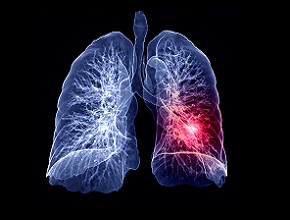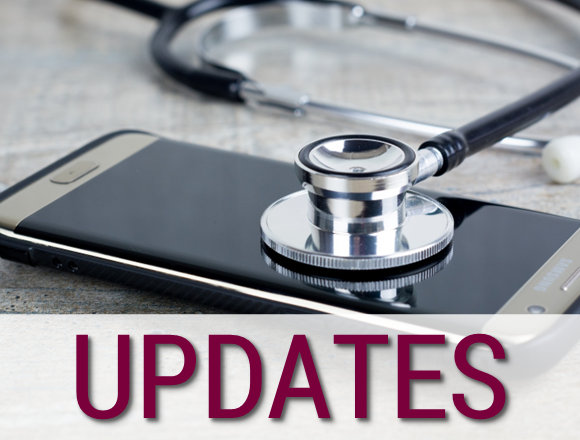Dr Ryan Zarychanski—an accomplished researcher, hematologist, and intensivist from University of Manitoba, Canada—joins Dr Roman Jaeschke to discuss the latest trial results regarding anticoagulation in noncritically ill patients with coronavirus disease 2019 (COVID-19).
For part 1 of the interview, click here.
Roman Jaeschke, MD, MSc: Good afternoon. Welcome to the second part of the interview with Prof. Ryan Zarychanski from Winnipeg, our hematologist and intensivist who led the conduct and analysis of the largest anticoagulation trials in COVID-19. In the previous episode you were talking about critically ill people and I want to remind us that these were people with mortality between 35% and 40%. Now we’ll talk about the moderately ill. I wonder if we [c]ould start again by specifying what kind of population we are talking about?
Ryan Zarychanski, MD, MSc: Right. Thank you for the invitation, Dr Jaeschke. It’s a real pleasure to be joining you today. These are the results of the moderately severe[ly] [ill] patient population hospitalized with COVID-19 in the multiplatform trial, the trial that enrolled patients on 5 continents—2200 patients, moderately ill, were enrolled. Moderate illness was defined as hospitalization for <72 hours in most part and you could be on oxygen—and most people were (over two-thirds)—but high-flow nasal oxygen or [something] more than that, like noninvasive or invasive [ventilation], was an exclusion from the moderately ill patient population.
Roman Jaeschke: Sorry, were they all on oxygen or two-thirds [of them] were on oxygen?
Ryan Zarychanski: I think approximately two-thirds were on oxygen and some were not on oxygen.
Roman Jaeschke: So, in some of them, there was no respiratory compromise to a degree requiring oxygen, but they were all hospitalized for some other, gastrointestinal (GI) or whatnot, reason. Correct?
Ryan Zarychanski: Yeah, correct.
Roman Jaeschke: OK. Maybe we can go straight to what the comparative interventions were here and what you have observed?
Ryan Zarychanski: In the moderate[ly] [ill] patient population, which is different than the severe[ly] [ill] patient population, therapeutic anticoagulation with heparin—and it was mostly a low-molecular-weight heparin—was associated with the treatment benefit. There was a 4% increase in survival without the need of organ support through to 28 days. The primary outcome was called organ support–free days, which combined mortality and the need for organ support defined as high-flow ventilation (noninvasive or invasive), vasopressors, or extracorporeal membrane oxygenation (ECMO). Our results and our analysis are adjusted for age and sex, and site, and time. And so, the adjusted absolute difference in survival without organ support is ~4%.
Roman Jaeschke: OK. For some people the trials in COVID-19 are a little bit difficult to interpret, but effectively what we are saying is that if we followed all those patients for 21 days—because I believe it was either 21 or 28 [days]—within that window, people who were anticoagulated spent 4 fewer days on life support and people who died were categorized as spending 0 days on life support. Am I getting it roughly right?
Ryan Zarychanski: Roughly right, for sure. The primary outcome to 21 days is an ordinal outcome. So, if it’s death, it’s counted as -1. If you don’t need organ support, it’s counted actually as 22. We looked at the proportional odds difference at every scale of the ordinal outcome and over the ordinal outcome. And there’s a 30% increase in the odds of survival without a degree of organ support. It functions a little bit on the ward categorically [editors' comment: as a categorical outcome]. And it’s not that complicated to understand, to be honest, because 75% of people don’t require organ support. They stay on the ward and they recover. So, the difference in those who need intensive care unit (ICU)–level care or die is ~4%, which has major clinical implications at the patient level. So, 4% of people—[with] a number needed to treat of almost 25 or so—don’t die or go to the ICU. And from a system’s perspective: what kind of beds are we running out of? What kind of beds do we run out of in Manitoba?
Roman Jaeschke: ICU...
Ryan Zarychanski: [What kind of beds] have they run out of in Texas? ICU beds, of course. So, from a health-care system perspective, there is a great benefit to the system also, with a generic, inexpensive, available, and familiar drug.
Roman Jaeschke: OK. And if I see—again, I’m looking at the table from your trials—there was ~1% fewer deaths in that group; regardless of whether it’s statistically significant or not, if true, there would be obviously a major issue.
Ryan Zarychanski: Of course, it’s the Bayesian trial so we don’t use the term statistically significant, but there still... I think it was 84% of posterior probability of that mortality difference. Contrary to the RECOVERY trial, where the outcome is triggered by mortality—which is a very hard outcome and easy to understand—but there’s a lot that occurs before mortality, at the patient level and at the system level. That’s why I think that our primary outcome of organ support–free days—and it combines mortality—is really, I think, a little more encompassing.
Roman Jaeschke: OK. Again, it could spare the resources at the system level. I wonder, it took quite a bit between finishing these trials—I believe they were finished in January or February—and your original press release, if you wish, and then publication. Was there or is there any controversy in the interpretation of the studies? Or is it widely accepted at the moment that those patients should be anticoagulated? What’s your opinion on it?
Ryan Zarychanski: Sure. I mean, of course, we wish the trial results were in print or published online in the journal quicker than at… the time that elapsed. I don’t know if it is a long time for any normal trial, to be honest...
Roman Jaeschke: In the COVID-19 era it is [laugh].
Ryan Zarychanski: In the COVID-19 era we’d like to see things more expediently published, for sure. The multiplatform trial was the first... This was the first time we had done a trial like this (we had to even make a term for it), called the multiplatform trial, where we have 3 independent trial platforms, that is, ACTIV in the United States (USA); ATTACC through Canada but also through other countries; and REMAP[-CAP], which is mostly [in] Australia, Europe, and other countries as well, including Canada and the USA… where we had the 3 platforms: In fact, there are more than 3 data providers, all federating data—not in the meta-analysis but individual line patient data—to one place (Berry Consultants in the USA) for analysis by the analytic team. And where we gained in enrollment and collaboration, it took us a little bit of time to perfect all the data federation for the final analysis. That took time.
Second of all, it was a new trial design, the multiplatform trial, and it took... We had to make sure that reviewers in the journal understood this and we needed to make sure we got the messaging right given the different results on the ward and in the ICU, and present this in a way that was congruent between papers and digestible amongst a broad audience.
Roman Jaeschke: OK. Maybe the last 2 questions. If I remember...
Ryan Zarychanski: Sure.
Roman Jaeschke: The first one is: When we are looking at the continuum of severity and the duration of COVID-19… You know, people are at home, people come to an emergency [department], people go on the floor, people go on oxygen, we start steroids, remdesivir, tocilizumab, heparin, [we] transfer [patients] to an ICU, put [them] on a nasal cannula, intubate [them], put [them] on ECMO… How would you advise clinicians to use heparin in this setting? And I understand [that] there is no single simple answer. Where does severity interact with risks of bleeding? How do you think clinically these days?
Ryan Zarychanski: Well, to just set the stage for some of the other secondary results... The bleeding risk in moderate[ly ill] patients was low, like <2% compared to 1%. The thrombosis rate was equally low but somewhat reduced with therapeutic anticoagulation. There’s a number needed to treat to prevent death or escalation of care of ~25. We accept these risks—the risks of bleeding, the risk of mortality—every day in myocardial infarction (MI) or acute coronary syndrome. Every day. And these are the same risks, or very similar risks, involved in some outcomes, particularly in bleeding as well. So, in patients with a standard bleeding profile, where the median length of stay is 5 days in COVID-19, it feels like it’s a fairly easy win for a 4% absolute or just an absolute reduction in death or progression to critical illness. At a patient level and at a hospital system level, those are wins, and the probability of those wins is really high, like [being] 99% sure that the treatment benefit will ensue.
But in patients in whom you’re not sure if they’re really progressing, they’re just on a little bit more oxygen than yesterday, they’re well otherwise, I’d like to wait another day and see how they go. Well, that’s a patient who maybe you might wanna observe for a little bit longer if you hadn’t started therapeutic anticoagulation already, they’ve been admitted already for a day and they’re doing fine with a little bit of oxygen. But again, I think that we are overestimating the treatment risks at some level. And we wouldn’t want to diminish the proven benefit of the therapeutic agent that’s been shown in the trial of >2000 patients.
Roman Jaeschke: Well, it’s clear where your heart is. The last question. We had an interview with Dr Douketis a few days ago, who was providing [us] with some guesses on the clinical sense. And one of them is, say, we have a person who is in the hospital, who spends a few days on heparin for the treatment of COVID-19, improved, and now is going home. Would you agree with Dr Douketis’ judgment not to continue this heparin [use] post discharge?
Ryan Zarychanski: Right. If you’re admitted and on oxygen, then our results are clear that therapeutic anticoagulation has a treatment benefit. Period.
Roman Jaeschke: Right.
Ryan Zarychanski: If you’re ready to go home, we do not know if there is a treatment benefit beyond discharge. Those trials are ongoing through... I forgot which ACTIV series it is.... And a couple of other trials going on around the world. If you’re admitted and on oxygen, but no high-flow or greater [support], therapeutic anticoagulation is where you should be focusing that in addition to standard therapies that include steroids and tocilizumab. If you progress to the ICU, that’s an interesting question. So, now you’re a severe-state person and should you continue therapeutic anticoagulation at that point? The answer is we don’t know. But the trial results that we have presented and published [showed] that [there’s] a treatment benefit—20% of those patients went to the ICU and that’s the treatment benefit that we published on. Would that treatment benefit be mitigated if we stopped the anticoagulation? Perhaps. Would the treatment benefit be even greater if we stopped therapeutic anticoagulation? We’re not sure either. And we have started a second randomization through the REMAP-CAP [trial] in hopes to answer that question in the remaining parts of the pandemic.
Roman Jaeschke: At least we know what we know and we know what we don’t know, which gets to the future of your trials. Listen, thank you very much for conducting those trials, for planning them, for analyzing them. It must have been a herculean effort to do all of this. And I want both to congratulate you and thank you for it.
Ryan Zarychanski: Thank you, Dr Jaeschke. It was a massive effort by a lot of people and I am here speaking about it, but we had 3 independent platforms led by various people in many countries. Canada had a big role in it, by the way, and we ought to feel proud as a nation for what we’ve achieved within a global collaborative trial.
Roman Jaeschke: Thank you very much and I hope to talk to you again. Thank you.
Ryan Zarychanski: Thank you.
 English
English
 Español
Español
 українська
українська











